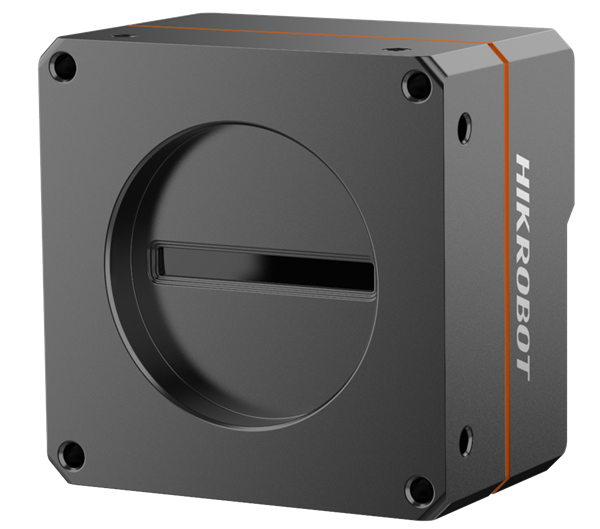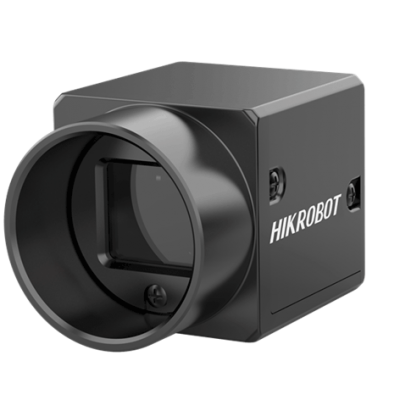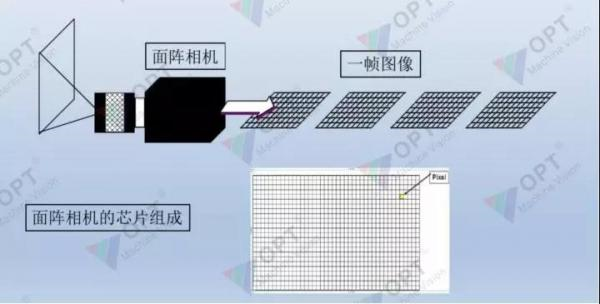小优智能科技有限公司成立于2015年底,是一家专注于高精度3D机器视觉模组研发、生产及销售的高科技企业。
公司自主研发的3D机器视觉模组采用激光/DLP白光编码光栅结构光+双工业相机方案,还原物体三维信息,广泛应用于消费电子领域、工业领域和安防领域,具有精度高、速度快、成本低的优势。
Linear array cameras are mainly used in image processing in industrial, medical, scientific research and security fields. In the field of machine vision, linear array camera is a special kind of vision machine. Compared to area array cameras, its sensor has only one line of sensitive elements, thus making high scanning frequencies and high resolutions possible. A typical application area of linear array cameras is the detection of continuous materials, such as metals, plastics, paper, and fibers. The detected object is usually in uniform motion, and one or more cameras are used to scan it continuously line by line to achieve uniform detection of its entire surface. The image can be processed line by line, or the image of a multi-line array can be processed. In addition, the linear array camera is ideal for measuring situations, thanks to the high resolution of the sensor, which can accurately measure down to the micron.


1, line array camera, as the name suggests is a "line" shape. Although it is also a two-dimensional image, it is extremely long, several K in length, and the width is only a few pixels. Generally, this camera is only used in two cases: first, the measured field of view is a slender band, which is mostly used for detection problems on the drum. Two, need a great field of view or very high precision.
2, in the second case (need a great field of view or extremely high accuracy), it is necessary to use the excitation device to stimulate the camera several times, take many photos, and then take a number of "bar" images, combined into a huge picture. Line formation camera is expensive, and in the case of large field of view or high precision detection, its detection speed is slow - the general camera image is 400K ~ 1M, and the combined image has several M so large, the speed is naturally slow. Slow work makes good work. For these two reasons, linear array cameras are only used in very special cases.
Area array camera: achieves pixel matrix shooting. In the image taken by the camera, the detail of the image is not determined by the number of pixels, but by the resolution. Resolution is determined by the focal length of the selected lens, the same camera, the selection of different focal lengths of the lens, the resolution is different. The number of pixels does not determine the resolution (sharpness) of the image, so what are the benefits of a large pixel camera? There is only one answer: reduce the number of shots and improve the test speed.


In an image, the detail of the image is not determined by the number of pixels, but by the resolution. Resolution is determined by the focal length of the selected lens, the same camera, the selection of different focal lengths of the lens, the resolution is different. If the resolution of 20um is used, for the part of 1mm*0.5mm, it occupies a total of 1/0.02×0.5/0.02 = 50×25 pixels, if the resolution of 30um is used to represent the same component, there are 1/0.03×0.5/0.03=33×17 pixels, Obviously, 20um resolution is better than 30um resolution in terms of image detail.
Since the number of pixels does not determine the resolution (sharpness) of the image, what are the benefits of a large pixel camera? There is only one answer: reduce the number of shots and improve the test speed. If one is 1 million pixels, the other is 3 million pixels, the definition is the same (resolution is 20um), the FOV of the first camera is 20mm×20mm = 400 square mm, the FOV of the second camera is 1200 square mm, shooting the same PCB, assuming that the first camera wants to shoot 30 images, The second camera takes only 10 images.
For the area array CCD, the application surface is wide, such as the measurement of area, shape, size, position, and even temperature. The advantage of area array CCD is that two-dimensional image information can be obtained, and the measurement image is intuitive. The disadvantage is that the total number of pixels is more, and the pixel number of each line is generally less than the linear array, the frame rate is limited, and the advantage of linear array CCD is that the one-dimensional pixel number can be done a lot, and the total pixel Angle is less than the planar array CCD camera, and the pixel size is more flexible, the frame number is high, especially suitable for the measurement of one-dimensional dynamic targets. Taking linear array CCD online measurement of linear diameter as an example, it is introduced in many papers, but when it comes to image processing, it is based on ideal conditions, and from the point of view of practical engineering application, linear array CCD image processing algorithm is still quite complex.
Due to the restriction of production technology, the area of a single array CCD is difficult to meet the demand of the general industrial measurement field of view. The advantages of linear array CCD are high resolution and low price, such as TCD1501C linear array CCD, the number of photosensitive pixels is 5000, the pixel size is 7μm×7μm× 7μm (adjacent pixel center distance), the linear array CCD one-dimensional imaging length is 35mm, which can meet the requirements of most measurement field of view, but the linear array CCD to obtain two-dimensional images, It must be equipped with scanning motion, and in order to determine the corresponding position of each pixel of the image on the measured part, it must also be equipped with devices such as grating to record the coordinates of each scanned line of linear array CCD. Generally speaking, these two requirements lead to the following deficiencies in image acquisition with linear array CCD: long image acquisition time and low measurement efficiency; The complexity and cost of the system are increased because of the scanning motion and the corresponding position feedback link. The image accuracy may be reduced by the scanning motion accuracy, which will eventually affect the measurement accuracy.
Even so, the linear array CCD image acquisition scheme still has its unique advantages in the following aspects: linear array CCD plus scanning mechanism and position feedback link, its cost is still much lower than the same area, the same resolution of the planar array CCD; The coordinates of the scanning line are provided by the grating, and the precision of the high-precision grating ruler can be higher than the manufacturing precision of the pixel spacing of the planar array CCD. In this sense, the precision of the image obtained by the linear array CCD in the scanning direction can be higher than that of the planar array CCD image. The newly emerged line-array CCD sub-pixel splicing technology can make the pixels of two CCD chips dislocate each other by 1/2 pixels in the alignment length direction of the online array, which is equivalent to inserting all pixels of the second CCD in sequence into the pixel gap of the first CCD, indirectly "reducing" the pixel size of the linear array CCD, and improving the resolution of the CCD. It alleviates the problem that it is difficult to reduce the pixel size of CCD due to the influence of technology and materials, and theoretically can obtain higher resolution and accuracy than the area array CCD.
Therefore, the scheme of linear CCD and scanning motion to obtain images is still widely used, especially in the case of requiring a large field of view and high image resolution, it can not even be replaced by a planar CCD. However, only high resolution can not guarantee high image recognition accuracy, especially the image obtained by linear CCD, although the resolution is high, but due to the impact of scanning motion accuracy, its image is more special than the surface CCD image. Therefore, image recognition should not only make full use of the advantages of high resolution, but also overcome the influence of scanning motion from the algorithm, so that the error of mechanical transmission will not directly affect the final image recognition accuracy
摘自:https://zhidao.baidu.com/question/46367378.html